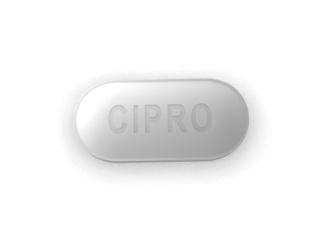Antibiotics
Antibiotics are a class of medications used to treat bacterial infections by either killing bacteria or inhibiting their growth. They have revolutionized medicine and saved countless lives since their discovery. Here is an overview of antibiotics:
How Antibiotics Work:
- Bactericidal vs. Bacteriostatic: Some antibiotics kill bacteria directly (bactericidal), while others inhibit their growth and reproduction (bacteriostatic).
- Targeting Bacterial Structures: Antibiotics work by targeting specific structures or processes in bacteria, such as cell walls, protein synthesis, DNA replication, or metabolic pathways.
- Specificity: Antibiotics are generally effective against certain types of bacteria and may be ineffective or even harmful against others. They are usually prescribed based on the type of bacteria causing the infection.
Common Types of Antibiotics:
- Penicillins: Penicillin was the first antibiotic discovered and is still widely used today. It works by interfering with bacterial cell wall synthesis. Examples include amoxicillin and ampicillin.
- Cephalosporins: Cephalosporins are similar to penicillins but are effective against a broader range of bacteria. Examples include cephalexin and ceftriaxone.
- Macrolides: Macrolide antibiotics interfere with bacterial protein synthesis. They are commonly used to treat respiratory infections, such as pneumonia and bronchitis. Examples include azithromycin and erythromycin.
- Fluoroquinolones: Fluoroquinolones inhibit bacterial DNA synthesis and are often used to treat urinary tract infections and respiratory infections. Examples include ciprofloxacin and levofloxacin.
- Tetracyclines: Tetracyclines inhibit bacterial protein synthesis and are used to treat a variety of infections, including acne, respiratory infections, and Lyme disease. Examples include doxycycline and minocycline.
A variety of antibiotics plays a key role in successfully treating infections.
- Amoxicillin (Amoxil, Cenmox, Augmentin, Trimox) is a penicillin that is often used to treat respiratory tract, urinary tract and other infections.
- Doxycycline (Vibramycin) is a tetracycline widely used to treat skin infections, acne, respiratory infections, and others.
- Ciprofloxacin (Cipro) is a fluoroquinolone that is often used to treat urinary tract infections, respiratory infections, and others.
- Azithromycin (Zithromax) is a macrolide often used to treat infections of the respiratory tract, skin, soft tissue, and others.
This is just a small list of popular antibiotics, and there are many others, each of which has its own characteristics and application in clinical practice.
Proper Use and Risks:
- Prescription Only: Antibiotics are prescription medications and should only be used under the guidance of a healthcare professional. Taking antibiotics without a prescription or for non-bacterial infections can lead to antibiotic resistance.
- Completing the Course: It’s essential to complete the full course of antibiotics as prescribed, even if symptoms improve before the medication is finished. Failure to do so can contribute to antibiotic resistance.
- Side Effects: Antibiotics can cause side effects, such as nausea, diarrhea, allergic reactions, and interactions with other medications. It’s essential to discuss any concerns with a healthcare provider.
- Antibiotic Resistance: Overuse and misuse of antibiotics can lead to antibiotic resistance, where bacteria develop the ability to survive and grow despite antibiotic treatment. This can make infections more difficult to treat and increase the risk of complications.
Future Directions:
- Research: Ongoing research is focused on developing new antibiotics, improving existing ones, and finding alternative treatments for bacterial infections.
- Antibiotic Stewardship: Healthcare providers and public health organizations are working to promote antibiotic stewardship programs to optimize antibiotic use, reduce unnecessary prescribing, and combat antibiotic resistance.
Overall, antibiotics are invaluable tools in the fight against bacterial infections, but their use must be judicious to ensure their continued effectiveness. Collaboration between healthcare providers, researchers, policymakers, and the public is essential to address the challenges posed by antibiotic resistance and safeguard public health.
Antibiotics for sale without a prescription
While it’s true that some online pharmacies may offer antibiotics for sale without a prescription, it’s crucial to emphasize the importance of using antibiotics responsibly and under the guidance of a healthcare professional. Antibiotics should only be taken when prescribed by a doctor to ensure proper diagnosis, treatment, and monitoring of potential side effects or interactions.
Regarding the antibiotics you mentioned being available on the website pharmacysf.com:
- Tinidazole: Tinidazole is an antibiotic used to treat a variety of infections, including certain types of bacterial and parasitic infections. It’s essential to use Tinidazole only as prescribed and to complete the full course of treatment, even if symptoms improve before the medication is finished.
- Macrobid: Macrobid is a brand name for nitrofurantoin, an antibiotic commonly used to treat urinary tract infections (UTIs) caused by certain types of bacteria. Like other antibiotics, Macrobid should be taken exactly as prescribed by a doctor and for the full duration of treatment to ensure effectiveness and prevent antibiotic resistance.
- Trimox: Trimox is a brand name for amoxicillin, a commonly prescribed antibiotic used to treat a wide range of bacterial infections, including respiratory tract infections, ear infections, and urinary tract infections. As with all antibiotics, it’s crucial to use Trimox as directed by a healthcare professional and to complete the full course of treatment.
- Amoxil (Amoxicillin): Amoxicillin is a widely-used antibiotic belonging to the penicillin class. It’s effective against various bacterial infections, including respiratory tract infections, ear infections, urinary tract infections, and skin infections. Amoxicillin works by inhibiting bacterial cell wall synthesis. However, it’s essential to complete the full course of treatment as prescribed by your healthcare provider, even if symptoms improve before the medication is finished.
- Augmentin (Amoxicillin/Clavulanate): Augmentin is a combination antibiotic that contains amoxicillin and clavulanate potassium. Clavulanate potassium enhances the effectiveness of amoxicillin by inhibiting bacterial beta-lactamase enzymes, which can degrade amoxicillin. Augmentin is used to treat a broader spectrum of bacterial infections compared to amoxicillin alone, including more resistant strains. Like amoxicillin, it’s crucial to finish the entire course of Augmentin as prescribed.
- Cipro (Ciprofloxacin): Ciprofloxacin is a broad-spectrum antibiotic from the fluoroquinolone class. It is used to treat a wide range of bacterial infections, including urinary tract infections, respiratory tract infections, skin infections, and gastrointestinal infections. Ciprofloxacin works by inhibiting bacterial DNA gyrase and topoisomerase IV enzymes, preventing bacterial DNA replication and transcription.
- Bactrim (Sulfamethoxazole/Trimethoprim): Bactrim is a combination antibiotic containing sulfamethoxazole and trimethoprim. It is used to treat urinary tract infections, respiratory tract infections, gastrointestinal infections, and certain types of pneumonia. Sulfamethoxazole/trimethoprim works by inhibiting bacterial folic acid synthesis, which is essential for bacterial DNA and protein production.
- Doxycycline: Doxycycline is a tetracycline antibiotic used to treat a variety of bacterial infections, including respiratory tract infections, skin infections, eye infections, and certain sexually transmitted infections. Doxycycline works by inhibiting bacterial protein synthesis. It is also used for malaria prophylaxis and the treatment of acne.
- Levaquin (Levofloxacin): Levofloxacin is a fluoroquinolone antibiotic used to treat bacterial infections, including respiratory tract infections, urinary tract infections, skin infections, and certain types of pneumonia. Levofloxacin works by inhibiting bacterial DNA gyrase and topoisomerase IV enzymes, preventing bacterial DNA replication and transcription.
- Zithromax (Azithromycin): Azithromycin is a macrolide antibiotic used to treat various bacterial infections, including respiratory tract infections, skin infections, ear infections, and sexually transmitted infections. Azithromycin works by inhibiting bacterial protein synthesis. It is often prescribed as a short-course therapy due to its long half-life and once-daily dosing regimen.
While these antibiotics may be available for purchase without a prescription from some online pharmacies, it’s essential to exercise caution and only obtain them from reputable sources. Additionally, individuals should consult with a healthcare provider before taking any antibiotic to ensure it is appropriate for their condition and to receive proper dosing instructions and monitoring.
















